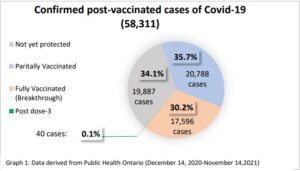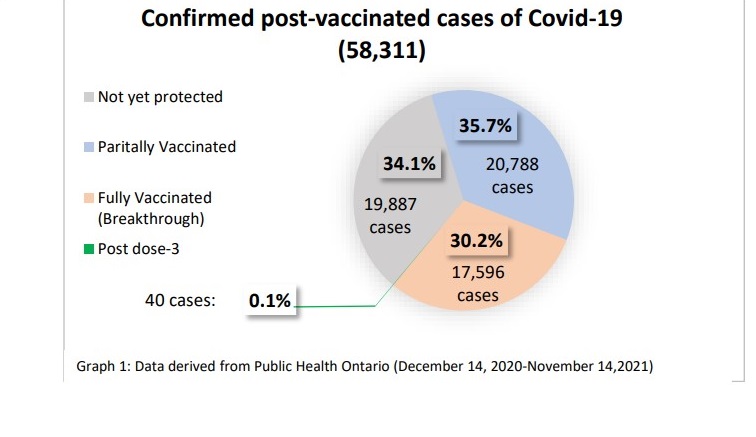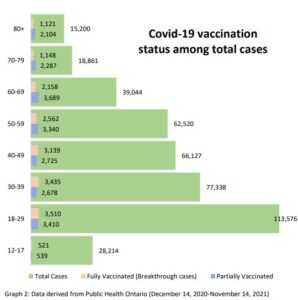Seeking clarity in the vast world of the “Covid unknowns”

Omicron, the fifth Covid variant, comes with a whole set of worrisome questions. Is this mutation more transmissible, is it capable of causing more severe illness and are current Covid-19 vaccines effective against the Omicron variant. Medical experts maintain that vaccination is the best way to protect against Covid-19.
Fears and anxieties mount as the world awaits more information on Omicron’s transmissibility and the severity of this particular variant. Scientists around the world continue to study Omicron and it may be weeks before some definite answers emerge. In the meantime, experts suggest that continued safety protocols combined with vaccination could provide protection against serious disease.
To look at what we already know may provide some insight. The most comprehensive study, the Confirmed cases of Covid-19 following vaccination in Ontario (the Report), by Public Health Ontario, provides detailed data on cases that contract Covid-19 post vaccination. The Report collected and analyzed data between December 14, 2020 up to November 14, 2021.
As reported by Francesco Veronesi (November 26), in that one-year period, the Ontario Report indicates that a total of 11,154,162 individuals were fully vaccinated. That represents about 76% of eligible Ontarians who completed the required doses of a Health Canada authorized Covid-19 vaccine.
Of that group, 17,596 were identified as breakthrough cases, having contracted Covid-19 after being fully vaccinated. The number drops to just 40 cases following the third-dose booster shot.
In this series, we offer a closer look into the Report’s data to better understand what the vaccination status is of those who test positive for Covid-19. Out of 463,805 confirmed positive cases, the majority, 91.7% were unvaccinated. Only 8.3% of all cases (38,242) were partially vaccinated (having completed the first dose), fully vaccinated or post third-dose booster.
That value does not include the nearly 20,000 individuals who started the vaccination series but fell under the 14-day period after the first dose; therefore, they were classified as not yet protected. They represent 34% of the total 58,311 confirmed post-vaccinated cases of Covid-19 (see graph 1 above).
The rate decreases to 30% for those considered fully vaccinated. Despite the high rate of immunization, “cases may occur among vaccinated individuals due to a larger proportion of the population being vaccinated”, as stated in the Report.
Medical experts advise that vaccines offer some degree of protection against infection and severity of illness. Research suggests vaccine effectiveness increases up to 85% post second dose, according to the report. What appears obvious is that the virus does not discriminate against whom it chooses to infect.
Regardless of age, gender or health condition, it would appear that no one is immune to infection. The number of people infected following either vaccine dose is significantly lower compared to the unvaccinated, across all age groups (see graph 2). Furthermore, there were fewer infections in people over the age of 50 who were fully vaccinated compared to those who were partially protected with one dose.
The next series will take a closer look into the severity of infections post vaccination and those requiring hospitalization.




